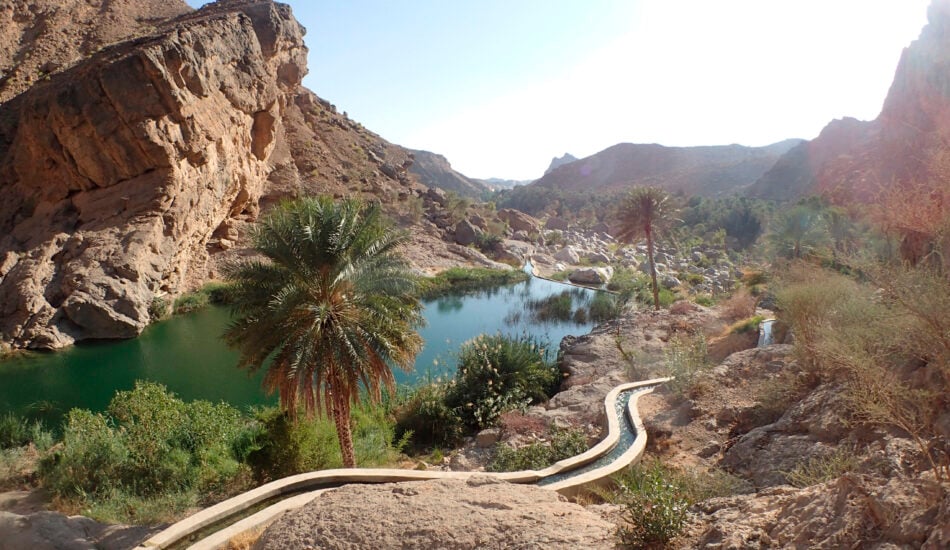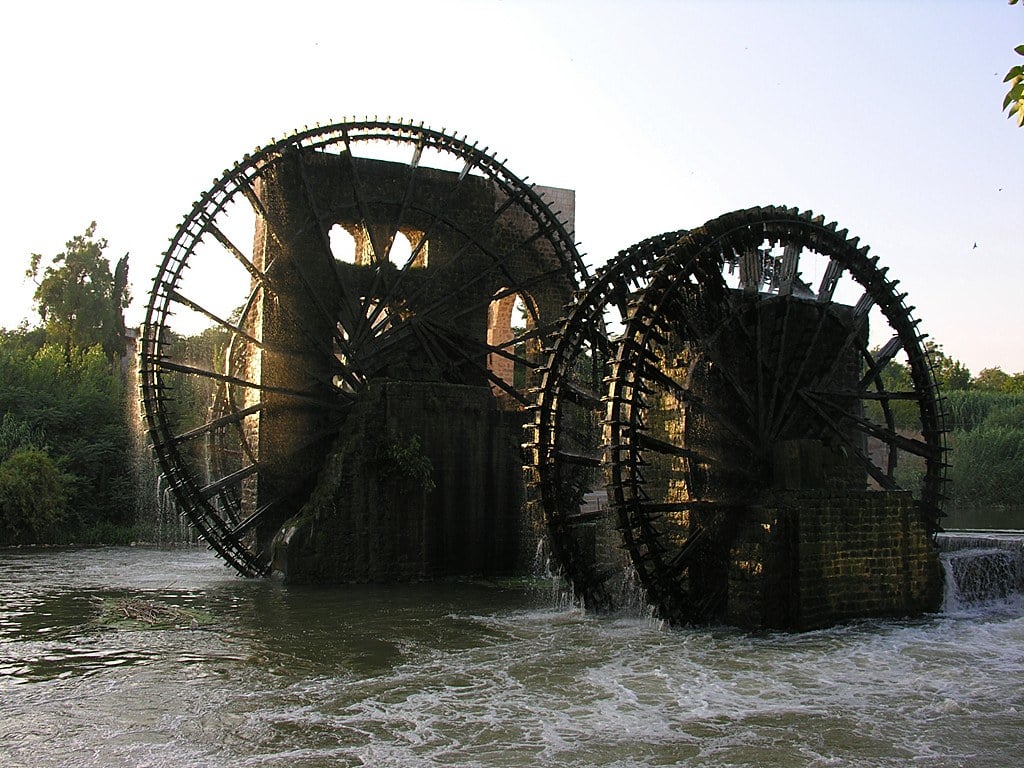
Traditional water systems have existed in the MENA region for thousands of years. These systems were used for e.g. the collecting, transporting or storing of water. Think of the qanat (called foggara in North Africa and the Levant, falaj in the UAE and Oman, khettaras in Morocco, and kariz in Iran), an irrigation technique in which a long tunnel is dug into dry land that allows water from underground aquifers to be accessed.* Another example are different types of cisterns, which were often built to collect rainwater, while also operating as a drain to gather runoff water. Several of these techniques have lost their relevance with the introduction of new techniques. However, in several MENA countries traditional water systems are still relevant and used today.
In this article we highlight some of the research from our water reports, with examples of Morocco, Yemen, Syria, and the United Arab Emirates.
Morocco: Khettaras
Khettaras are a succession of wells linked by underground canals that lead to fields (Figure 1). The canals should provide enough water for upstream palm groves while retaining enough for those downstream, according to tradition and the water rights prescribed by ancestral contracts. Artificial lakes are also created to store water for cattle and for use during water shortages.[1]
Khettaras are constructed manually by a small group of skilled workers. With proper maintenance, khettaras enable self-sufficient agriculture based on palm and olive trees, as well as the cultivation of wheat, barley, maize, alfalfa, fruits and vegetables in enclosed gardens. Khettaras are more than an irrigation system, however, they embody the traditional social structure.
Read more about the traditional water systems of Morocco.
Yemen: Spate irrigation
Spate irrigation is an ancient water harvesting system by which floodwater is diverted from its river bed and channelled to basins where it is used to irrigate crops and feed drinking-water ponds, serve forest and grazing land and recharge local aquifers. In Yemen, large traditional spate systems consisting of numerous individual intakes, and canals irrigating areas of up to 30 000 ha, were developed in individual wadis. Sophisticated water sharing arrangements were formalized, with rules relating to water rights that exist in written records dating back at least 600 years.[2]
The spate irrigation areas in Yemen varies and is difficult to measure, depending on the availability of the rainfall and floods water. The name of the diversion structures of the traditional spate irrigation system differ from area to area. The terms used depend on the size, order length, type of building material, shapes, way of built and position in the wadi. Examples of names are: Oqmas, Obars, Atm (in the coastal area), Saqiya (in Hadhramout and Shabwa) and Rozzum (in some parts of the highlands).[3]
Read more about the traditional water systems of Yemen.
Syria: Norias
Norias are water wheels made of wood and nails with boxes hung on the nails. They are constructed on rivers to bring water to agricultural land, homes, mosques, cafés and bars. The wheels rotate with the water flow in the river. The mouths of the boxes face the water flow when they approach the surface of the river and leave it filled with water. This water is then poured into a multi-stream canal to be distributed to different users.
The city of Hama has 17 norias on the Orontes River, but only four of them are still operational. The biggest noria in Hama has a 20-metre diameter. It rotates once every 20 seconds, raising 2,400 litres of water from the river in each rotation.

Norias once played an essential role in agriculture. Although their role in irrigation has gradually declined, both as a result of the falling water level in the river and the introduction of modern irrigation systems, their touristic value has increased. Hama’s norias, which were built by the Arameans in 745–727 BC , are claimed by the local population to be the oldest in the world. Syrian artefacts often depict norias, such as the magnificent mosaic plate found on Column Street in the ancient city of Apamea, 55km north of Hama, which dates back to 420 AD.
Read more about the traditional water systems of Syria.
UAE: Aflaj
Aflaj are man-made canals or waterways that may run above or below ground. Aflaj is the plural of falaj. The source of falaj water is a spring or well that is conveyed to the surface by gravity. There are about 40 operational aflaj in the UAE, mostly in the east near the border with Oman.
Aflaj suit the social and cultural conditions of rural areas in an arid country like the UAE. The continuous water flow from many aflaj throughout history is proof of their importance, efficiency, suitability and sustainability to their hydrological environment. However, they do have some disadvantages. A summary of the advantages and disadvantages is shown in Table 1.
Table 1: Advantages and disadvantages of aflaj water systems.
| Advantages | Disadvantages |
| Historically successful use and local knowledge of renewable aquifers. | Discharges depend upon groundwater fluctuations, which may have a negative effect on agriculture and other uses. |
| No energy needed as the water flows from the water-feed area to the water-use area under gravity. | The water is liable to high loss rates as discharges cannot be controlled and may exceed water needs during some months. |
| Easily maintained with locally available materials. | Water is vulnerable to pollution as it flows close to the surface of the ground. |
| Since groundwater utilization is done within the framework of water balance, it does not lead to exploitation of limited water resources. | |
| Achieves a fair water distribution among users. |
Read more about the traditional water systems of the UAE.
[1] Peroni L. The khettara water management ancient techniques promoted in Morocco.
[2] Noman A.A., Indigenous knowledge for using and managing water harvesting techniques in Yemen
[3] Ministry of Water and Environment, 2010. Baseline Survey for Future Impact Evaluation. Sanaa Basin Water Management Project. MWE: 107.


